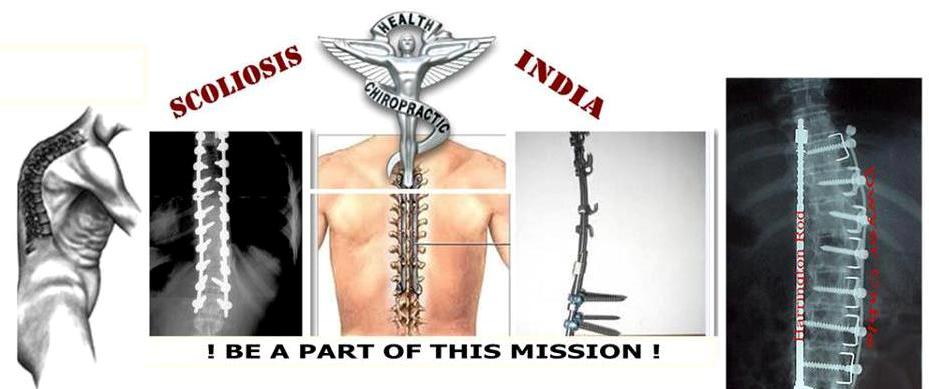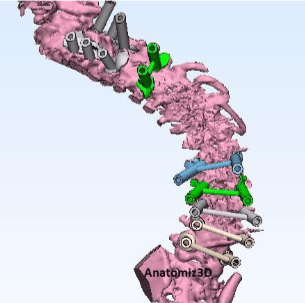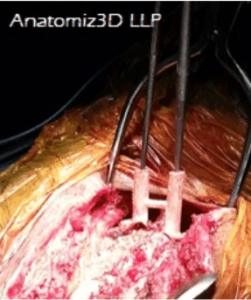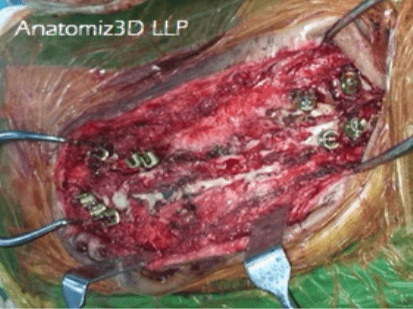Scoliosis is one of those conditions that can range from barely noticeable to completely debilitating. I have a very slight case myself, and it doesn’t affect me in any way that I’m aware of, but in some cases, the person suffering from the disease can be left unable to stand up straight, to walk, or even, in the most severe cases, to breathe properly. While the condition, in the past, could be at least somewhat corrected or at least stopped from progressing by braces, those braces could be large, clunky, and uncomfortable – not to mention embarrassing to the children for whom they were most often prescribed.
3D printing has done quite a bit to make scoliosis treatment less agonizing for even severe cases. 3D printed braces are becoming more commonly used, and they’re worlds better than more traditional braces – they can be customized to perfectly fit the patient’s body, in addition to being made lighter, thinner, and overall more comfortable (and even stylish).
In the most severe scoliosis cases, however, sometimes surgery is the only option. Back surgery is never a minor procedure, and scoliosis surgery is especially tricky, as it requires screws or wires to be placed throughout multiple vertebrae and then connected to stabilize the back. (Okay, now my back is starting to hurt just thinking about it.) Determining the correct placement of the implants requires a lot of skill, and it isn’t always successful, unfortunately.
Complications or incorrect placement of implants require revision scoliosis surgery, which is even more tricky than the original procedure, as the first implant must be removed and replaced. Because the spine will likely have adjusted slightly thanks to the first implants, it can be even more difficult to determine the proper angles at which to place the screws – and if a screw is incorrectly placed, it can even damage the spinal cord and nerve.
That’s a scary proposition for anyone, but especially for a ten-year-old girl. I can’t imagine being that age and having already undergone multiple back surgeries, but that was the case for a young girl who came to Lilavati Hospital in Mumbai, India in September. The girl had a severe curvature of the spine, and had had several unsuccessful surgeries, leaving her spine even more deformed and damaged. The surgical team at Lilavati, led by Dr. Abhay Nene and his assistant, Dr. Kunal Shah, knew that the surgery was going to be especially difficult due to the previous damage, so they turned to healthcare technology company Anatomiz3D for help.
Anatomiz3D, also based in Mumbai, is the healthcare division of tech company Sahas Softech, and their expertise in the creation of 3D printed surgical models has already improved or saved the lives of many. Three days before the 10-year-old girl was scheduled for surgery, the Lilavati team approached Anatomiz3D with the patient’s CT scan. Using Materialise Mimics Innovation Suite 19, Firoza Kothari and Devarsh Vyas of Anatomiz3D identified the laminar defects and pedicles where the implants would need to be placed, then carefully designed and 3D printed the drilling guides that the surgical team would need to insert new, properly placed implants.
It was still a challenging surgery, requiring removal of the previous implants before inserting the new ones, but thanks to the precise, properly sized 3D printed surgical guides, the surgical team was able to place the screws accurately, and the girl is now recovering well from what may have been the first scoliosis surgery performed in India with 3D printed surgical guides. It certainly won’t be the last, though – the Lilavati team stated that the use of the guides will be extremely helpful in surgeries to correct deformed vertebrae particularly in children. Already, Anatomiz3D has worked on another case with the Lilavati team, which offered feedback on how to improve the snap fit of the guides, and they will continue to work to improve spinal surgeries and, consequently, the lives of many scoliosis sufferers. Discuss in the Scoliosis Surgery forum at 3DPB.com.




Does your child have uneven shoulders, with one shoulder appearing higher than the other? Or an oddly curved spine that looks like the alphabet S? These are some of the symptoms of scoliosis, a medical condition commonly affecting children and adolescents, particularly girls.
ReplyDeleteThe prevalence of scoliosis is the highest during the growth spurt years, between the ages of 9 and 15. Scoliosis also affects adults, but is less common.
In scoliosis, the normally straight spine curves from side to side due to a deformity in the bone. The deformity can be congenital, present from birth, or it can develop during the growing years. Most often, there is no known cause, and the condition is then called “idiopathic scoliosis”.
The treatment for scoliosis depends on the age of the patient, the severity of the spine condition, and the cause.
Most patients with idiopathic scoliosis who have a curvature that is less than 25 degrees, don’t need treatment. These patients will simply need to be observed at reg
scoliosis clinic singapore